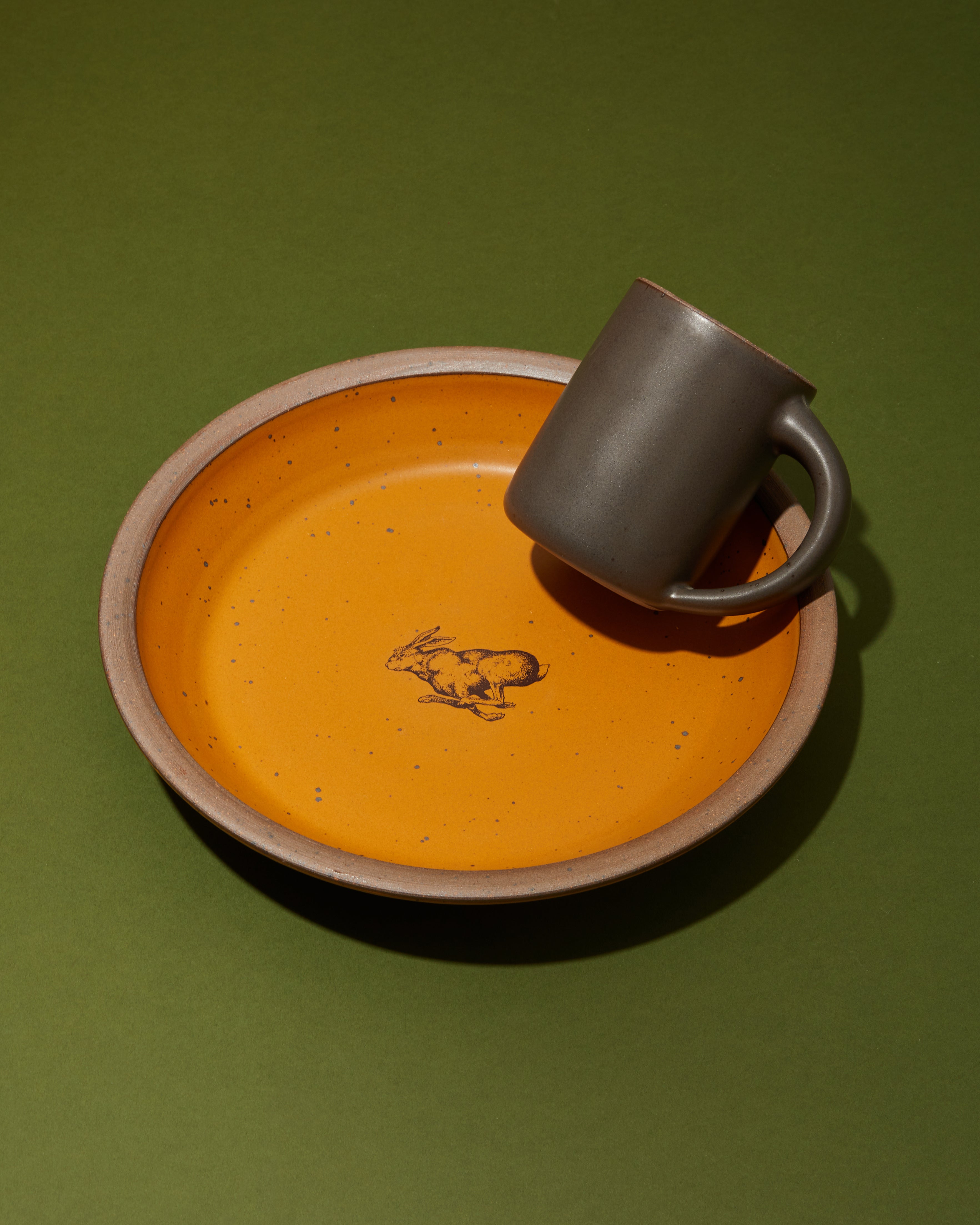Running and making pottery: they might not seem closely related, but anyone who has ever made a commitment to either will tell you, it’s really a matter of showing up day after day. And the incrementally getting better, stronger and having more control? That’s what keeps you going. The tenth time or the hundredth time you sit down at the wheel, you might throw a pot that doesn’t look like all the misshapen, comically thick ones you had made up until that moment. You start running by walking when you need to and one fine day, you notice you didn’t walk at all. Not yesterday, either.
And on and on it goes. But when you find that groove, the milestones get harder to find. All the pots you throw are pretty decent now. Your drawers fill with t-shirts from 5Ks and finishers’ medals. You wear out pair after pair of shoes. Your runner’s log fills with miles.
Tracksmith, a New England-based performance running gear company and builder of running communities, thought of a pie plate. It’s a piece of bakeware with the potential to be some kind of trophy, maybe given by the friends who organized the just-us Turkey Trot to the first one across the finish line. Maybe it’s the reward you plan to give someone you love for hitting a goal: they ran every damn day for a month, a year. Or it’s something else, not even running-related, that was hard to accomplish.

These pie plates were made in very small numbers by East Fork’s Founder Alex Matisse, who returned to his wheel for this production run for the first time in several years. If I had one, I’d hang it on my wall where I could see it when I embark on the difficult, feeling a little scared, whether here at my computer or tightening my laces.
A Chat with Alex Matisse

Shannon: What did you know about Tracksmith prior to making pie plates for them to sell?
Alex: I had known Tracksmith and admired Tracksmith as another brand that has a very clear point of view with its focus on its community. Tracksmith’s community is more niche than East Fork’s. Their community focuses on the competitive runner, amateur and professional alike. I thought that was really interesting and I loved what Tracksmith was building and how they were going about doing it.
Shannon: It was about a year ago that you first started talking to Matt Taylor [Tracksmith’s co-founder and CEO] about a possible collaboration, right?
Alex: We had started talking on a Slack channel and yeah, it was too short of a notice for last year and so we decided to do it this year. With the pie plates, I signed on for a little more than I realized, with the commitment to production throwing. It was a challenge, but it was fun and it was good to get limbered up again.
Shannon: How many did you make?
Alex: I ended up making probably over 150 but we had about 80 of them turn out as Seconds or even Thirds due to problems with the glazes and that was really sad. So Tracksmith didn’t get that many, so it’s a very limited edition with limited quantities.
Shannon: How long had it been since you did a production run like this?
Alex: It’s the first time in four or five years.
Shannon: How do you feel about that?
Alex: At the moment, what I really enjoy doing is working on new shapes and I really don’t have time to commit to any production throwing. I learned through this process that there’s too much with what I have going on here but it did feel good and I had a few moments of flow state, but it was kind of fleeting. That is all to be expected after such a hiatus.
Shannon: That sounds like what a runner would say, speaking of Tracksmith.
Alex: Yeah, and the funny thing is, I’ve gotten started running since starting this project, which has been really, really wonderful. I started running a couple of months ago, at first I just thought you could go out and run as hard as you could for 4 or 5 miles, and I learned very quickly the body needs a little bit more of a warm up, but I slowed things down and am starting to feel some slow and steady improvements.
Shannon: Running is such a gift. What’s next for wheel-throwing at East Fork?
Alex: I’m excited about next year when I build out the Small Batch team, adding at least one person to it. That will be great because we’ll be able to do more of these projects. I’ll be managing that department, so I’m getting more involved in throwing and being back in the studio, but I won’t be doing production runs.
Shannon: What is it like being back in the studio?
Alex: I’m really enjoying making things in smaller quantities, like pots that people ask me to make for a raffle. It’s also a place for me to think about new pieces we will add to the line in the coming years. When I don’t feel the pressure to “produce” I find I am happiest.

